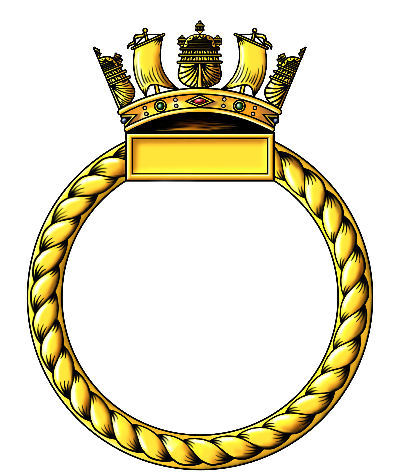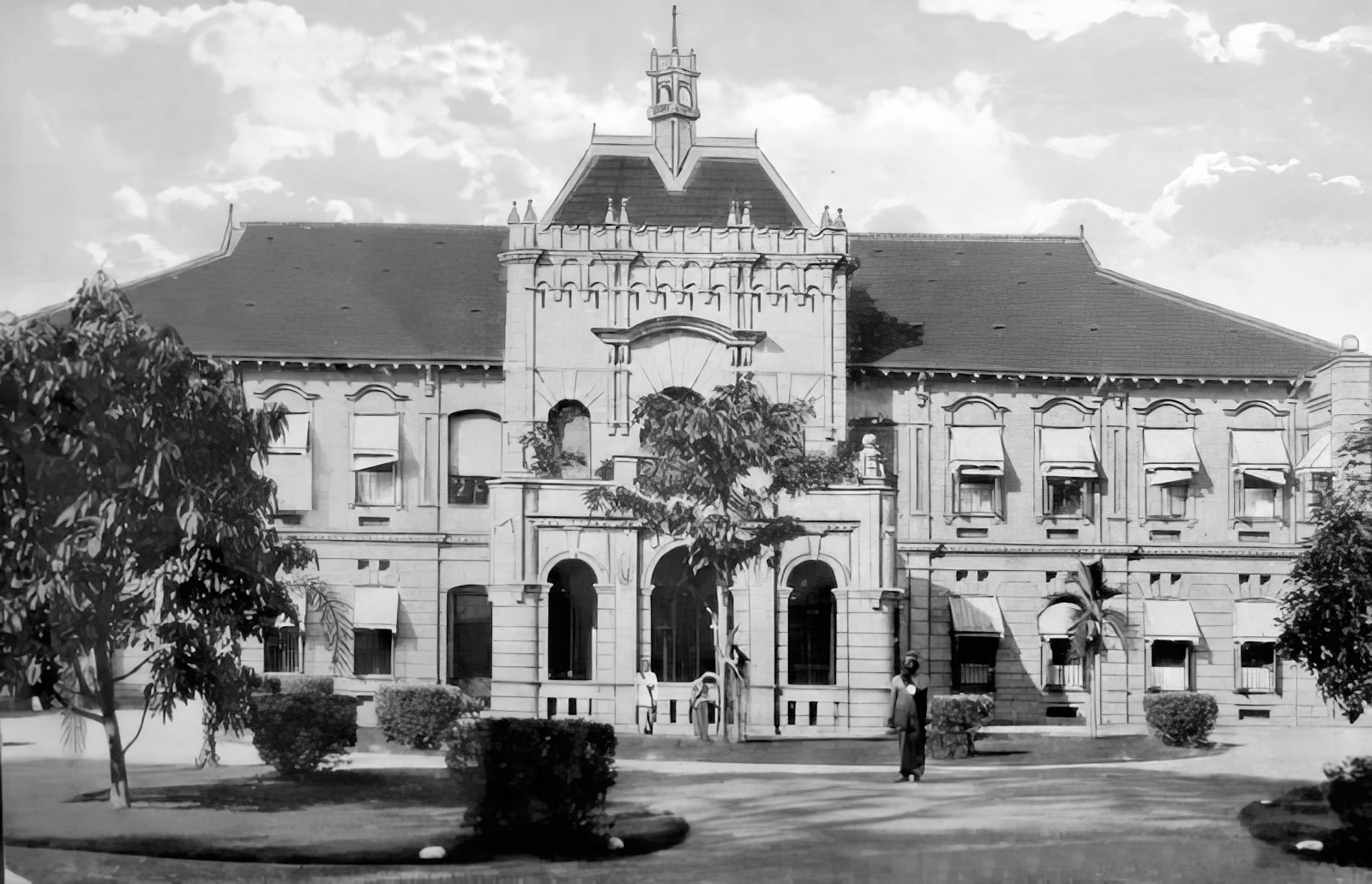R.N. Auxiliary Hospital

No badge issued for this establishment
Location
Colombo, Ceylon
Commanding Officers
Surgeon Commander (H) T. J. O’Riordan, MB, ChB
Surgeon Rear Admiral G. D. G. Fergusson, MRCS, LRCP (ret)
Related items
R.N. Auxiliary Hospital, Diyatalawa
Reminiscences
None
Gallery
None
R.N.A.H. Colombo

The General Hospital, Colombo, Ceylon shared by R.N. Auxiliary Hospital Colombo
Naval Auxiliary Hospital established in December 1941
Until December 1941 the medical needs of RN personnel in Colombo were handles by the R.N. Sick Quarters, Colombo, Surg. Com. (H) T. J. O’Riordan, MB, ChB as Senior Medical Officer. Patients requiring hospitalization were admitted to the Military Hospital, Colombo. However when orders were received from the Military Authorities on December 13th, 1941that all naval patients were to be evacuated from the Military Hospital, Colombo by December 23, 1941 the need for an R.N. Auxiliary Hospital became urgent. The Civil Authorities immediately handed over one block of the General Hospital, Colombo, capable of accommodating 115 patients. Beds were provided by the hospital, and bedding, furniture, mess traps, etc., were provided from naval sources. This wing of the General Hospital formed the foundation of the future Royal Naval Auxiliary Hospital, Colombo. Thus the nucleus of the Naval Auxiliary Hospital officially opened on December 23, 1941.
In January 1942 the De Soysa Lying-in Home, also part of the General Hospital, with its own Medical Superintendent was handed over to the RN. Besides providing a further 100 beds, this provided administrative offices, dispensary, laboratory, and an out-patient department. Accommodation was secured for 100 female nursing staff. Thus, by the February 1942 a Naval Auxiliary Hospital existed with accommodation for some 200 patients, to be jointly staffed, half by the General Hospital and half by the Royal Navy was operational. Plans for this unit’s expansion with a capital expenditure of some £10,000 included provision for accommodation for 525 patients, staffed by seven medical officers, two warrant Wardmasters, 33 nursing sisters, 6o V.A.Ds (Voluntary Aid Detachment nurses).., and 46 sick berth ratings. Opening two operating theatres, an X-ray department, dental surgery, baggage store, three kitchens and a Royal Naval Medical Depot.
On April 13th 1942, acting Surgeon Rear Admiral G. D. G. Fergusson, MRCS, LRCP (ret) arrived from the United Kingdom and took over charge of the hospital. At this time the hospital was functioning under great difficulties, largely due to the fact that Colombo had suffered an air raid a week previously; a large proportion of the native population had fled to the surrounding countryside resulting in an acute shortage of labour, particularly servants, cooks and laundry workers. Some disruption had also occurred in the supply of medical stores and equipment, but these deficiencies were made good by local purchase and with the assistance of military and civil supplies. By the time of the Admiral’s arrival the bed strength of the hospital had increased to 483, of which 150 were constantly kept available for emergencies in accordance with instructions of the Commander-in-Chief, East Indies.
Rapid expansion, shortages of accommodation for patients and staff, equipment and store
Overcrowding was a serious problem by the end of June 1942; the hospital was experiencing problems accommodating cases of pulmonary tuberculosis awaiting transfer to Durban to await onward passage to the UK. This was also true to some extent in the case of mental patients. It had also become obvious that accommodation for sick sisters and V.A.Ds had been overlooked, and in any case the sickness rate among the female nursing staff was much higher than had been foreseen, the chief cause being dengue fever, which was rife in the district in which the hospital was situated.
Stores and equipment continued to cause anxiety, due to the non-arrival of lend-lease consignments from America. In due course 90 percent of the issues of the medical depot at Trincomalee were sent to Colombo, but even so the situation as regards drugs and dressings became acute as Army and civil stocks were nearly exhausted. However, the Army eventually made arrangements to draw supplies from a central depot in India, and included naval requirements with theirs. Until this time Army hospitals ad been treating naval personnel with venereal cases but found it no longer possible to accommodate them, therefore it became necessary to open up two wards for these cases in the R.N. Auxiliary Hospital, thereby reducing the emergency accommodation available. Eventually, this problem was solved by establishing a mess for venereal patients in St. Joseph's Barracks.
The hold-ups in the arrival of lend-lease consignments from America resulted in the planned expansion of the X-ray department being delayed and the bulk of this work being done by the General Hospital X-ray Department. Shortage of other equipment, particularly microscopes, necessitated the bulk of bacteriological and pathological work being performed by the Ceylon Government Laboratory. In due course stores and equipment started to arrive from the United States and the hospital approached independence, with the exception of certain essentials.
Urgent need to expand hospital bed capacity in Ceylon
By the beginning of 1943 the number of cases was threatening to overwhelm the hospital; the main problem was still that of accommodating invalids, and in particular those suffering from pulmonary tuberculosis, awaiting passage to the U.K. As the majority of such cases were medical, this state of affairs threw a great strain on the resources of the medical section of the hospital, and it was frequently necessary to encroach upon the surgical wards set aside for emergencies. The Civil Authorities were unable to part with any more accommodation to the Navy, but it was agreed to build additional accommodation for sick officers to the extent of some 20 extra beds. At the same time difficulties arose as regards the accommodation of sick berth staff, because, in order to complete the proposed operating theatre block of buildings, it was necessary to relinquish two wards for sick berth staff mess decks. The main solution of accommodation difficulties at this time depended on the completion of the proposed Royal Naval Auxiliary Hospital, up country, at Diyatalawa.
Further pressure was placed on the already stretched resources in Mis-1943 when orders were received to accept Royal Indian Navy and Malay Navy patients; previously they had been treated in the General Hospital, Colombo. Although the new operating theatres came into use during July another surgical ward had had to be repurposed for the occupation of W.R.N.S. patients. Shortly after this approval was now given to take over a small private hospital a short distance from the main hospital, providing accommodation for about 60 female patients.
R.N.A.H. Diyatalawa opens but commitments continue to increase
The long awaited R.N. Auxiliary Hospital at Diyatalawa began receiving patients in late 1943, convalescent patients could now be evacuated by hospital train to Diyatalawa where approximately 380 patients could be accommodated. This easing on accommodation was to be shot lived however; during the first six months 1944 the daily admission rate to R.N. hospital Colombo was almost doubled, and it was no longer possible to retain the stipulated reserve of 150 beds for an emergency. So any easing of the situation by frequent evacuations of patients to Diyatalawa was largely neutralised by the general increase in admissions.
By the spring of 1944 R.N. Maxillary Hospital Colombo was a cumbersome dispersed establishment with facilities spread around the city, this lack of a single, bounded establishment suffered other shortages resulting from a shortage of administration staff and accounting for food, linen, cutlery and stores became problematic, items were disappearing at a rate which gave rise to grave concern.
On May 10th 1944 Surgeon Rear Admirals H. E. Y. White, CVO, OBE, MD, ChB, FRCS, KHS took over as Medical Officer in Charge of Royal Naval Auxiliary Hospital, Colombo; at this time unexpected medical commitments were rising, and the numbers of naval personnel in Ceylon was rapidly increasing, and when there was a general shortage of medical officers and nursing staffing. At the end of June 1944 it was officially reported that the hospital bed strength on the Island of Ceylon was totally inadequate to deal with essential commitments, that no pool or reserve of officers, V.A.Ds., or sick berth staff existed to replace losses due to a constant high rate of sickness. There was now a shortage of pharmaceutical staff to cope with the local store requirements of the hospital and the vast demands for supplies to the Fleet. At this time R.N.A.H. Colombo had a bed strength was 550, but the proportion of beds for sick officers was insufficient, as was that for sick members of the local female Service population among whom the incidence of sickness was especially high. Other disadvantages were a lack of isolation wards, and the almost total lack of recreation space and facilities.
A third Auxiliary Naval Hospital on the Island had been planned for many months; the Army’s Military Hospital for Indian troops at St. Peter's College, a Roman Catholic boys' school five miles south of Colombo was to transferred to the Admiralty in early 1944 but required extensive construction work to meet requirements for accommodating European patients. Planned to open in September 1944 the work was initially given low priority until the crisis in the main R.N. Auxiliary Hospital forced more urgent efforts to be taken to sped up construction. The site was able to accept a limited number of patient’s in august 1944 when a small number of wards became fit for use; as yet no facilities existed for investigating or treating general patients, and were there any staff for nursing them, however beds were available to which suitable selected cases could be transferred. At the start of October all venereal disease patients from the R.N.A.H. Colombo were transferred to St. Peter's along with a number of invalids awaiting passage, while technically remaining on the books of R.N.A.H. Colombo. Even with the limited transfer of patients to the St. Peter's wards R.N. Auxiliary Hospital, Colombo, was so overcrowded with patients by October that further routine admissions were impossible, and only urgent cases could be received. St. Peter's was to become an annex to R.N.A.H. Colombo and continued to receive minor cases until April 1st 1945 when it officially opened as an Auxiliary Naval Hospital; on this date a total of 115 patients on the site were transferred to the books of the new hospital.
The Royal Naval Auxiliary Hospital, Colombo, and the St. Peter's Royal Naval Auxiliary Hospital, Colombo, together received and treated a total of 16,121 Service patients.
Last modified: 15 September 2023
Primary information sources
Additional sources:
(1954) Surgeon Commander J. L. S. COULTER, D.S.C., R.N., ‘THE ROYAL NAVAL MEDICAL SERVICE’ London, Her Majesty's Stationery Office - Volume 1'Administraion'
Comments (0)